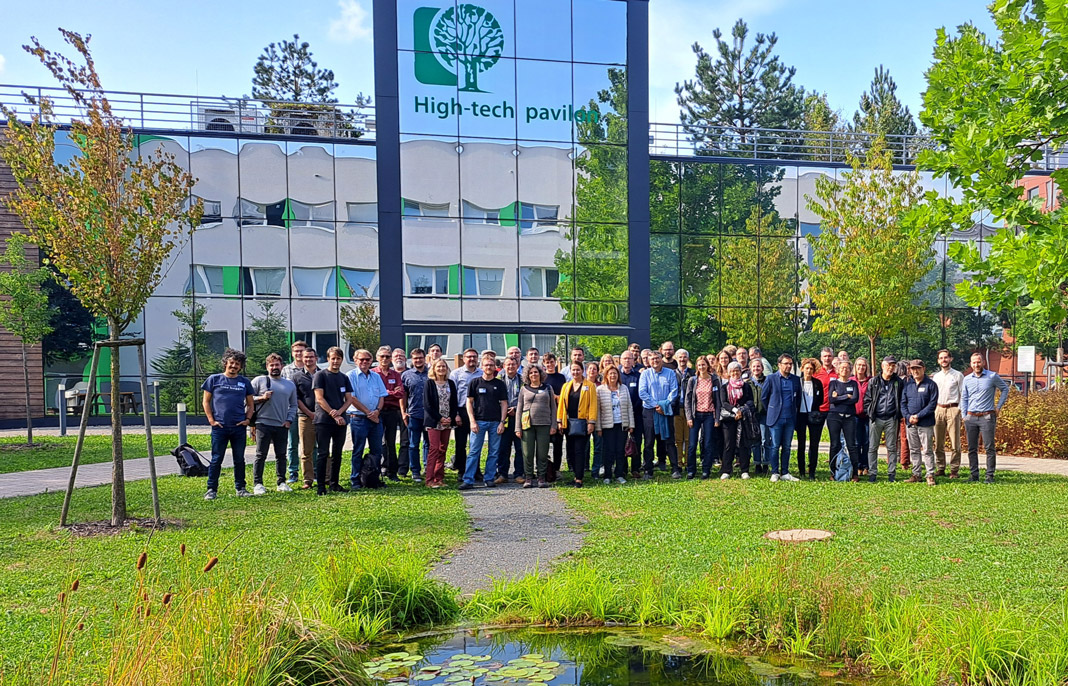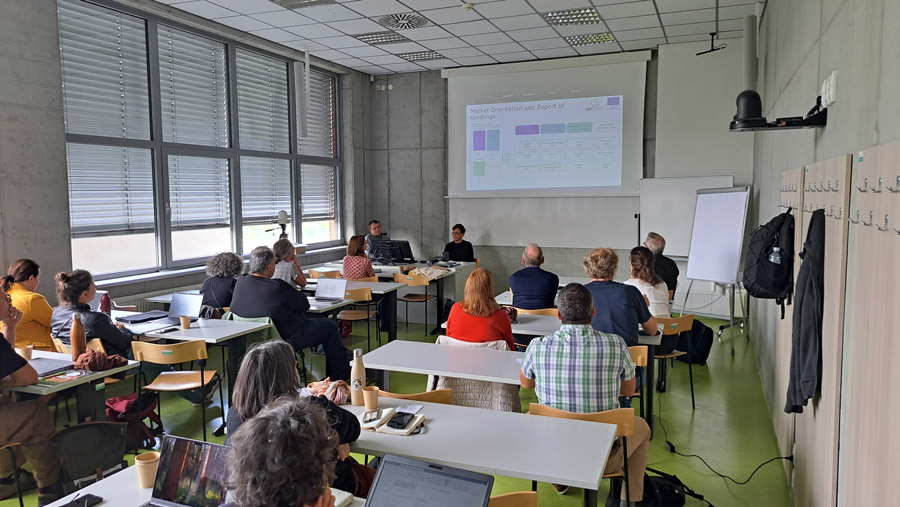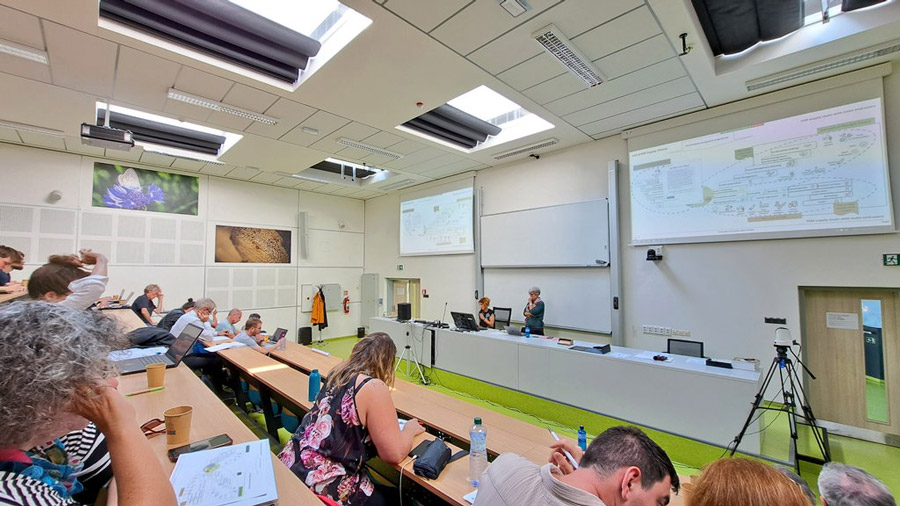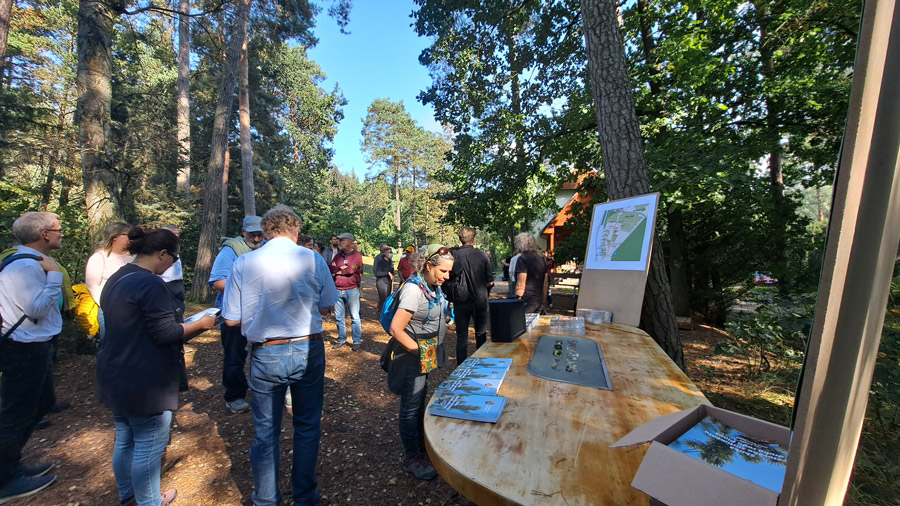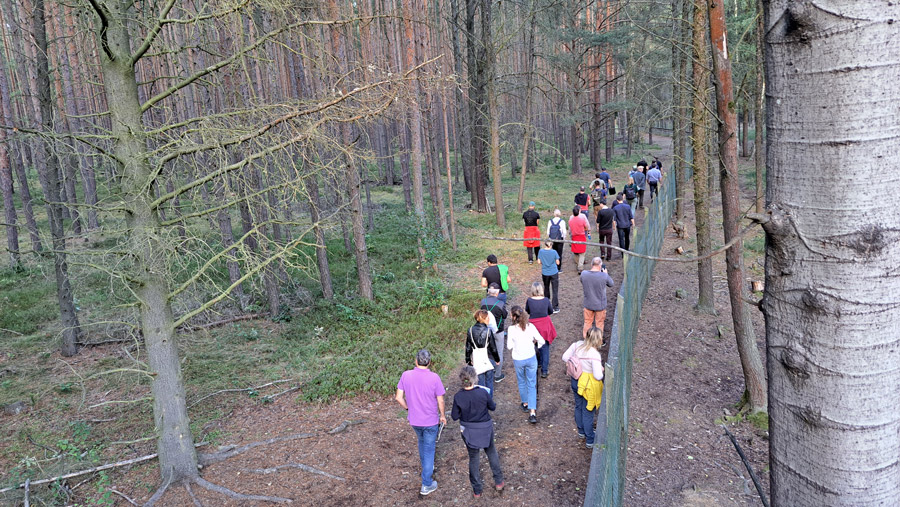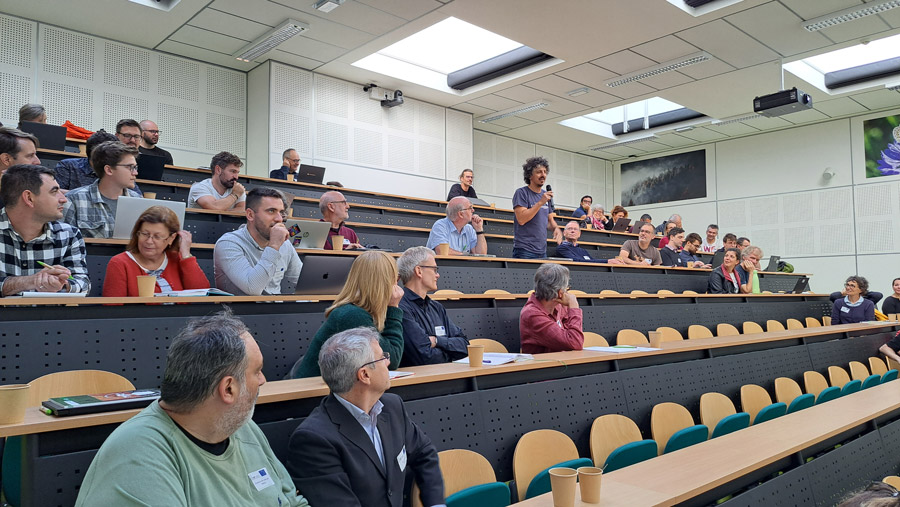The OptFORESTS annual meeting served as a vital platform for reviewing progress in enhancing forest resilience against climate change and outlining future research and collaboration steps. With a focus on key advancements across various project work packages (WPs), the three-day event, which took place in Prague (Czech Republic) from 17 to 19 September, featured engaging plenary sessions and a field visit that addressed ongoing challenges while celebrating notable achievements in forest genetics, seedling production, and data-driven forest management. This gathering brought together over 60 experts from 19 partner organisations, who exchanged insights and strategies for navigating the complexities of forest resilience and sustainable conservation and use of forest genetic resources.
One of the most prominent topics at the annual meeting was the integration of genetics into forest management practices. In a key session led by Work Package 4 (WP4), experts explored how Marteloscope training sessions—forest plots used to teach hands-on silvicultural techniques—could incorporate genetic information. Andrej Breznikar, from the Slovenia Forest Service, presented the results of a pilot project in which genetic traits were introduced into Marteloscope training software at a Slovenian site. This innovative approach aims to give forestry professionals a better understanding of how management decisions impact the genetic diversity of tree populations.
While the software was not originally designed for genetic analysis, the pilot showed it could be adapted to enhance decision-making processes in forest management. As a next step, a full “genetic module” for Marteloscope training will be developed, with the project set to roll out this new tool by February 2026. The inclusion of genetic traits will help guide decisions in maintaining biodiversity and forest health across various European sites.
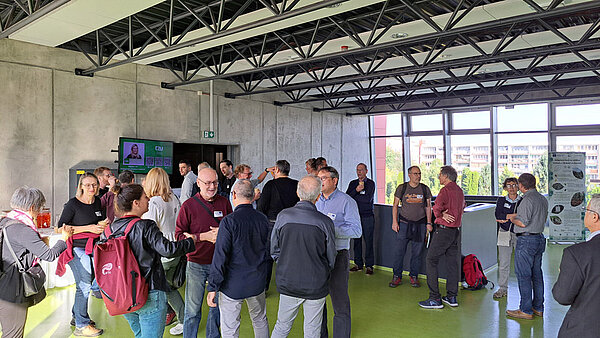
Seedling production was another important focus of the event, with Work Package 3 (WP3) leading discussions on protocols for growing and exchanging seedlings to be used in upcoming trials. Researchers emphasised the importance of preparing different species for future planting experiments, with tree types like Abies alba (silver fir) and Pinus sylvestris (Scots pine) being shared between nurseries in different countries. By exchanging seedlings and ensuring the right species are available for each region, OptFORESTS aims to test the adaptability of these species under changing climatic conditions.
The meeting also addressed data collection and modelling efforts under Work Package 2 (WP2). With much of the required data already gathered, the next challenge is to harmonise this information across partners, ensuring consistency and preparing it for use in climate-resilience models. These models will be instrumental in predicting how different tree species will respond to future environmental pressures.
A field visit to Sofronka Arboretum
The meeting also included a field trip to Sofronka Arboretum, nearby the city of Plzen, where participants toured a collection of over 60 pine species from around the world. The visit provided a practical look at the diversity of forest ecosystems and served as a backdrop for discussing the importance of forest biodiversity.
As OptFORESTS moves into 2025, the project will continue its research efforts, with more workshops, trials, and data analysis planned. By integrating genetics, fostering international collaboration, and advancing forest modelling, OptFORESTS is laying the groundwork for more resilient forests in a changing climate.
